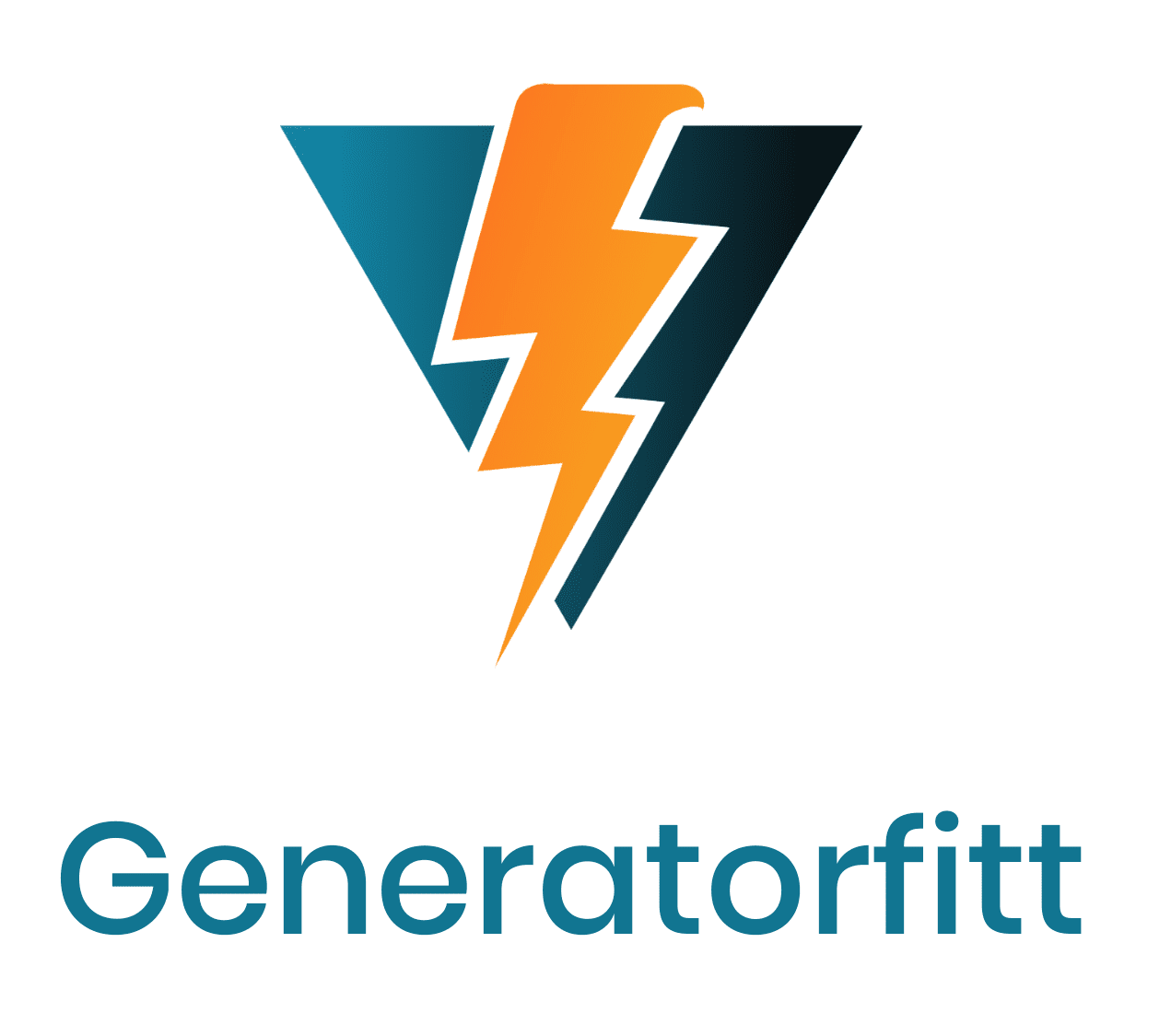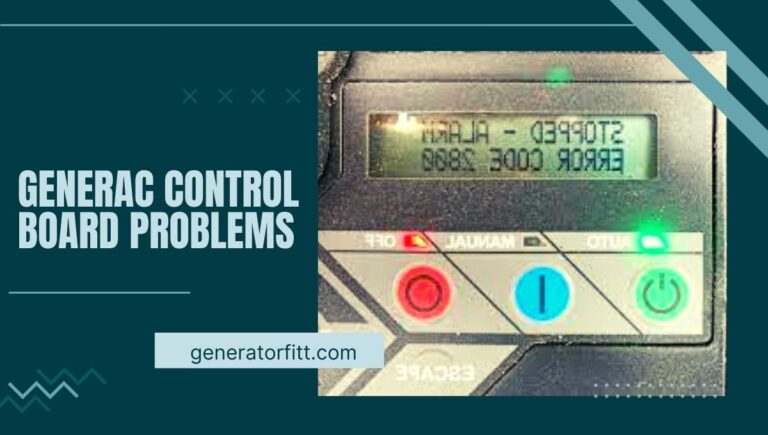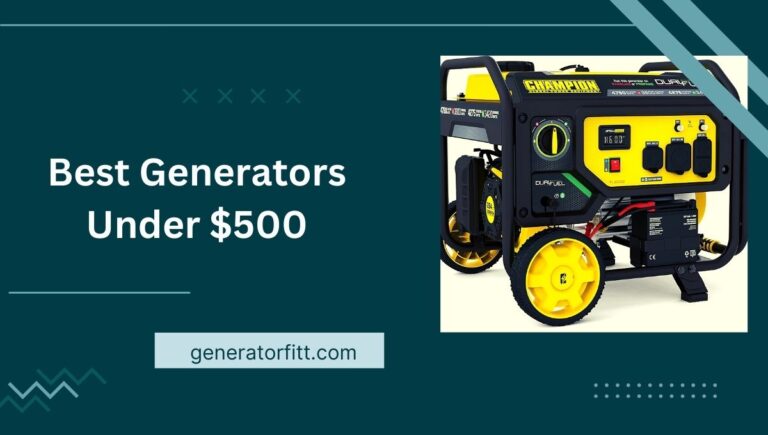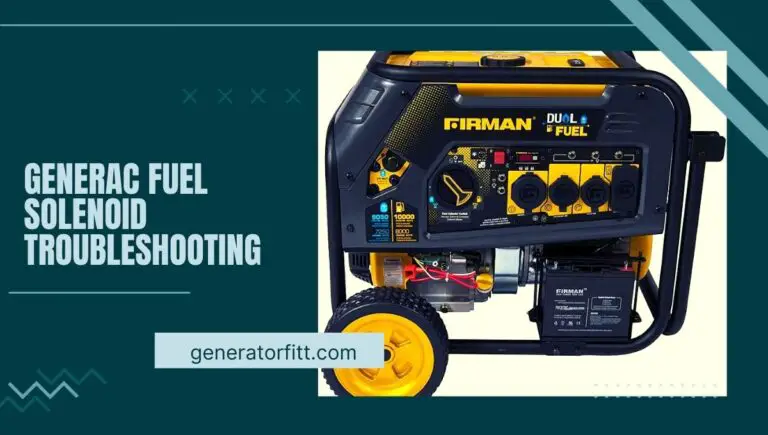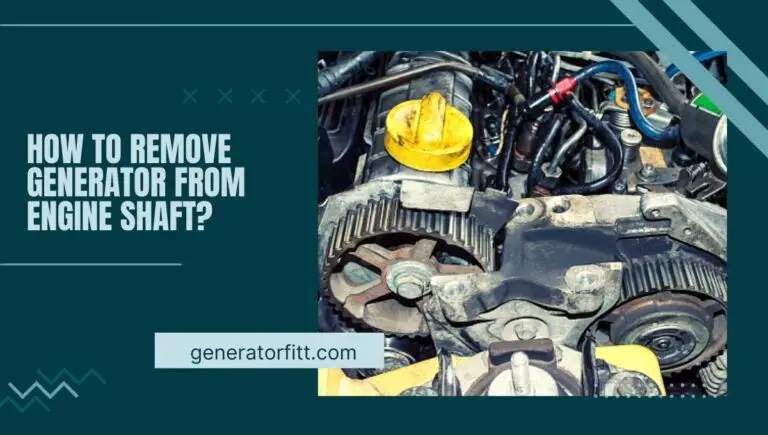5 Best Generator Silencer Box Reviews (Buying Guide) In 2023
In a world that relies heavily on electricity, generators have become indispensable tools. They provide us with power during unexpected outages and in remote locations where electrical connections are scarce.
However, one common drawback of generators is their noise. The loud, incessant hum of a generator can be disruptive and bothersome.
This is where generator silencer boxes come to the rescue. In this comprehensive guide, we’ll delve into the world of generator’s silencer boxes, exploring their purpose, benefits, installation, and more.

Top 5 Best Silencer Boxs for Generators
Here are the Reviews of the Top 5 Best Silencer Boxs for Generators:
IGAN Generator Tent Running Cover, Ultra Heavy Duty Tarpaulin Enclosure

The IGAN Generator Tent Running Cover is an accessory designed to provide protection and shelter for portable generators. It’s essentially an enclosure made from ultra-heavy-duty tarpaulin material to shield your generator from various environmental elements.
Here are some key features and considerations:
- Protection from Weather Elements: The primary purpose of this generator tent cover is to protect your generator from adverse weather conditions such as rain, snow, wind, and sunlight. Keeping your generator dry and sheltered can help extend its lifespan and maintain its performance.
- Tarpaulin Material: Tarpaulin is a heavy-duty, waterproof material commonly used for outdoor covers and shelters. It’s durable and can withstand harsh weather conditions, making it suitable for protecting generators.
- Design and Fit: These covers are usually designed to fit specific generator models or sizes. It’s important to ensure that the cover you choose is compatible with your generator’s dimensions to provide a snug and secure fit.
- Ventilation: Some generator covers come with ventilation features, such as mesh windows or openings, to ensure proper airflow and prevent overheating of the generator during operation.
- Easy Access: Look for covers that provide easy access to the generator’s control panel and outlets. This allows you to start and operate the generator without having to remove the entire cover.
- Secure Fastening: A good generator cover should have secure fastening mechanisms, such as zippers, straps, or drawstrings, to keep the cover in place and prevent it from being blown away by strong winds.
- Portability: If you plan to use your generator cover in different locations or for outdoor activities like camping or tailgating, consider the ease of setup and portability. Some covers come with carrying bags for convenient transportation.
- UV Protection: UV-resistant properties in the tarpaulin material can help protect your generator from sun damage and fading.
- Maintenance: Check the care instructions for the cover to ensure it remains in good condition over time. Some covers are easy to clean, while others may require special care.
- Price and Brand: Consider the price and the reputation of the brand when purchasing a generator cover. High-quality covers from reputable manufacturers may provide better protection and durability.
Generator Covers Heavy Duty Waterproof,600D generac generator cover

The “Generator Covers Heavy Duty Waterproof, 600D Generac generator cover” is designed to provide protection for your Generac generator.
Here are some key features and considerations related to this type of generator cover:
- Heavy-Duty Material: The “600D” in the product description typically refers to the denier rating of the material. A 600D fabric is made of polyester and is considered heavy-duty, providing durability and resistance to tearing.
- Waterproof: This generator cover is designed to be waterproof, meaning it should effectively repel rain and prevent moisture from reaching your generator. Waterproof covers are essential for protecting your generator from water damage.
- UV Protection: Many generator covers come with UV-resistant properties to protect your generator from sun damage and fading when exposed to direct sunlight for extended periods.
- Custom Fit: Ideally, this type of cover is designed to fit specific Generac generator models or sizes. A snug and secure fit helps ensure that your generator is fully covered and protected.
- Secure Fastening: Look for covers that have secure fastening mechanisms, such as drawstrings, straps, or elastic hems, to keep the cover in place, especially during windy conditions.
- Ventilation: Proper ventilation is important to prevent heat buildup and condensation inside the cover. Some covers have ventilation features like mesh panels or vents.
- Easy Access: Ensure that the cover design allows easy access to your generator’s control panel and outlets so you can start and operate it without removing the entire cover.
- Maintenance: Check the care instructions provided by the manufacturer to ensure that you maintain the cover properly and extend its lifespan. Some covers can be easily cleaned, while others may require special care.
- Portability: If you plan to transport your generator to different locations or use it for outdoor activities, consider how easy it is to set up and transport the cover. Some covers come with carrying bags for convenience.
- Price and Brand: Compare the price and consider the reputation of the brand when choosing a generator cover. Established brands often provide higher-quality products with better durability.
Zombiebox Generator Running Cover, Acoustic Barrier, Heavy Duty Generator Shelter

The ZombieBox Generator Running Cover is a specialized cover designed to provide several functions when running a generator.
Here are some key features and considerations related to this product:
- Acoustic Barrier: One of the unique features of the ZombieBox cover is its acoustic barrier properties. It’s designed to help reduce the noise generated by the running generator, making it an excellent choice for situations where noise control is important. This can be particularly valuable in residential areas or quiet environments.
- Heavy Duty: Like other heavy-duty generator covers, the ZombieBox is designed to be durable and able to withstand various weather conditions, including rain, snow, and sunlight. It’s made to protect your generator from environmental elements.
- Custom Fit: These covers are typically designed to fit specific generator models or sizes. Ensuring a custom fit helps provide full coverage and protection for your generator.
- Ventilation: Proper ventilation is crucial to prevent heat buildup and condensation inside the cover. The ZombieBox may have ventilation features to ensure your generator remains cool during operation.
- Access Panels: Some covers have access panels or openings that allow you to reach your generator’s control panel and outlets without having to remove the entire cover. This is a convenient feature when you need to start or operate the generator.
- Secure Fastening: Secure fastening mechanisms, such as straps, buckles, or zippers, help keep the cover in place, especially during windy conditions.
- UV Protection: UV-resistant properties in the material can help protect your generator from sun damage and fading.
- Portability: If you plan to use your generator in different locations or for outdoor events, consider how easy it is to set up and transport the ZombieBox. Some covers come with carrying handles or cases for convenience.
- Maintenance: Follow the manufacturer’s care instructions to maintain the cover properly. Regular maintenance can extend the lifespan of the cover.
- Price and Brand: Compare the price and consider the reputation of the brand when choosing a generator cover. Well-established brands often provide higher-quality products.
GENSHED Generator Shed – Generator Covers While Running & Generator Enclosure for Storage

The GENSHED Generator Shed is designed as a dedicated shelter and cover solution for generators, offering both protection while the generator is running and storage capabilities.
Here are some key features and considerations related to this product:
- Shelter and Cover: The GENSHED Generator Shed serves a dual purpose. First, it provides a refuge for your generator while it’s running, protecting it from environmental elements like rain, snow, and sunlight. Second, it serves as an enclosure for storing the generator when it’s not in use.
- Weather Protection: The shelter aspect of the GENSHED is designed to protect your generator from the effects of harsh weather conditions, ensuring it remains operational during inclement weather.
- Noise Reduction: While not all generator sheds are designed for noise reduction, some may include features to dampen the noise produced by the generator. Reducing noise can be important, especially if you’re operating the generator in a residential area or other noise-sensitive environments.
- Custom Fit: Generator sheds are typically designed to accommodate specific generator models or sizes, ensuring a snug and secure fit. A proper fit is essential to protect the generator effectively.
- Access Doors and Panels: These sheds often come with access doors or panels that allow you to reach the generator’s control panel and outlets without the need to remove the entire enclosure. This can be convenient for starting and operating the generator.
- Ventilation: Adequate ventilation is essential to prevent heat buildup and condensation within the shed. Look for sheds that incorporate ventilation features to keep the generator cool during operation.
- Construction Material: Generator sheds are typically constructed from durable and weather-resistant materials, ensuring long-term protection for your generator.
- Security: Some generator sheds may include locking mechanisms or provisions for securing the generator within the enclosure, helping to prevent theft or unauthorized access.
- Maintenance: Regular maintenance is important to ensure that the shed remains in good condition and continues to protect your generator effectively.
- Price and Brand: Consider the price and reputation of the brand when selecting a generator shed. Reputable brands often provide higher-quality products.
Generator Covers Heavy Duty Waterproof, 25”Lx24”Wx21”H Portable Generator Cover

The “Generator Covers Heavy Duty Waterproof, 25”Lx24”Wx21”H Portable Generator Cover” is designed to protect your portable generator from various environmental elements.
Here are some key features and considerations related to this specific generator cover:
- Size Compatibility: The dimensions “25”Lx24”Wx21”H” indicate the size of the cover, which is designed to fit generators with these specific dimensions. It’s important to ensure that your generator’s size matches the cover’s dimensions to ensure a proper fit.
- Heavy-Duty Material: The “heavy-duty” designation typically suggests that the cover is made from durable and weather-resistant materials. This helps protect your generator from rain, snow, wind, and sunlight.
- Waterproof: The cover is designed to be waterproof, meaning it should effectively repel rain and prevent moisture from reaching your generator. Waterproof covers are essential for safeguarding your generator from water damage.
- UV Protection: Many generator covers come with UV-resistant properties to protect your generator from sun damage and fading when exposed to direct sunlight for extended periods.
- Secure Fastening: Look for covers that have secure fastening mechanisms, such as drawstrings, straps, or elastic hems, to keep the cover in place, especially during windy conditions.
- Ventilation: Proper ventilation is crucial to prevent heat buildup and condensation inside the cover. Some covers have ventilation features to ensure your generator remains cool during operation.
- Easy Access: Ensure that the cover design allows easy access to your generator’s control panel and outlets so you can start and operate it without removing the entire cover.
- Portability: If you plan to transport your generator to different locations or use it for outdoor activities, consider how easy it is to set up and transport the cover. Some covers come with carrying handles or cases for convenience.
- Maintenance: Follow the manufacturer’s care instructions to maintain the cover properly. Regular maintenance can extend the lifespan of the cover.
- Price and Brand: Compare the price and consider the reputation of the brand when choosing a generator cover. Well-established brands often provide higher-quality products.
The Generator Silencer Boxes
generator’s silencer boxes, also known as generator mufflers or generator exhaust silencers, are crucial components in reducing noise generated by power generators.
These silencer boxes are designed to minimize the sound produced by the exhaust system of a generator, which can be quite loud, especially in industrial or residential areas. Understanding a generator’s silencer boxes involves knowing their purpose, components, and considerations when selecting one.
- Purpose:
- Noise Reduction: The primary purpose of a generator Quit silencer box is to reduce the noise produced by the generator’s exhaust system, including the engine’s exhaust gases and the airflow. This is essential to comply with noise regulations and to minimize disturbance to nearby residents or workers.
- Components:
- Outer Shell: The outer shell of a generator’s silencer box is typically made of steel or other durable materials. It provides structural support and protection from the elements.
- Internal Sound Absorption Material: Inside the silencer box, you’ll find sound-absorbing materials like fiberglass or mineral wool. These materials help absorb and dissipate sound energy.
- Baffles or Diffusers: Baffles or diffusers are internal components designed to redirect and disperse exhaust gases in a way that further reduces noise.
- Inlet and Outlet Ports: Silencer boxes have inlet and outlet ports designed to connect to the generator’s exhaust system and direct the exhaust gases through the silencer.
- Considerations for Selecting a generator’s Silencer Box:
- Noise Level Reduction: Different generator’s silencer boxes offer varying levels of noise reduction. The choice depends on the specific noise regulations in your area and how much noise reduction is required.
- Size and Compatibility: Ensure that the silencer box is appropriately sized and compatible with your generator’s exhaust system. It should fit securely and not obstruct airflow.
- Material and Durability: Consider the durability of the silencer box, as it will be exposed to the elements. It should be made of materials that can withstand outdoor conditions.
- Installation: Installation should be straightforward and compatible with your generator setup. Some silencer boxes are designed for easy installation, while others may require professional assistance.
- Maintenance: Check if the silencer box requires regular maintenance, such as cleaning or replacement of sound-absorbing materials.
- Regulations:
- Ensure that your generator’s silencer box complies with local noise regulations. Many areas have specific noise limits that must be adhered to, especially in residential or commercial zones.
- Effectiveness:
- The effectiveness of a generator’s silencer box can vary based on design, quality, and manufacturer. Research and choose a reputable brand known for producing effective silencer boxes.
- Cost:
- Costs for generator silencer (Quit) boxes can vary widely, so it’s essential to balance your budget with your noise reduction needs. Cheaper options may not provide as much noise reduction or durability.
generator’s silencer boxes are essential for reducing noise pollution in various settings, such as construction sites, data centers, hospitals, and residential areas.
When selecting a silencer box, it’s crucial to consider its effectiveness, compatibility with your generator, and compliance with local noise regulations. Proper installation and maintenance are also key factors in ensuring optimal noise reduction over time.
What Are generator’s Silencer Boxes?
generator’s silencer boxes, also known as generator muffler boxes or soundproof enclosures, are specially designed containers that house a generator to minimize noise emissions.
They serve the crucial function of reducing the sound generated by the exhaust system and the engine, making generators more neighbor-friendly and suitable for various settings.
The Benefits of Using generator’s Silencer Boxes
Here are the Benefits of Using the generator’s Silencer Boxes:
1. Noise Reduction
The primary advantage of the generator’s silencer boxes is their noise reduction capability. By encapsulating the generator within a soundproof housing, these boxes significantly decrease the noise levels produced during operation.
2. Enhanced Durability
generator’s silencer boxes also provide protection against external elements, such as rain, snow, and dust. This added layer of defense helps prolong the lifespan of your generator.
3. Compliance with Noise Regulations
In many residential areas, there are noise regulations that restrict the permissible noise levels during specific hours. generator’s silencer boxes ensure that your generator operates within these legal limits.
Choosing the Right generator’s Silencer Box
Some Important Factors in Choosing the Right Generators Silencer Box:
Factors to Consider
Selecting the appropriate generator’s silencer box is crucial for optimal performance. Here are some factors to consider:
1. Generator Size
Ensure that the silencer box is compatible with the size and type of generator you have. It should provide adequate space for the generator to function without overheating.
2. Noise Reduction Rating (NRR)
Check the NRR of the silencer box to determine its noise-reducing capabilities. Higher NRR ratings indicate better noise reduction.
3. Material and Build Quality
Opt for a silencer box made of durable materials, such as steel or aluminum, for longevity and protection against the elements.
Installing a generator’s Quit Silencer Box
Here are the Installing a generator’s Quit Silencer Box:
Step-by-Step Guide
- Prepare the Site: Choose a flat, stable surface for the generator and silencer box. Ensure proper ventilation to prevent overheating.
- Position the Generator: Place the generator inside the silencer box, making sure all connections are accessible.
- Connect Exhaust Pipes: Attach the generator’s exhaust pipes to the silencer box’s exhaust ports securely.
- Secure the Box: Fasten the silencer box to the ground or a mounting surface to prevent vibrations and movement.
- Ventilation: Install ventilation fans or openings to maintain airflow and prevent overheating.
Maintenance and Care
Maintenance and care are crucial for the proper functioning and longevity of generator’s silencer boxes. Here are some key considerations:
- Regular Inspections: Perform routine visual inspections to check for any visible damage, corrosion, or loose components. Ensure the box’s structural integrity is intact.
- Cleaning: Clean the exterior of the silencer box periodically to remove dust, dirt, and debris that may accumulate. A clean exterior can help prevent corrosion and maintain the box’s appearance.
- Inspect Sound-Absorbing Material: If your silencer box contains sound-absorbing material (like fiberglass or mineral wool), inspect it for signs of damage or deterioration. Replace any damaged material to maintain noise reduction effectiveness.
- Fasteners and Seals: Check and tighten any fasteners, such as bolts and clamps, that secure the silencer box to the generator’s exhaust system. Ensure that all seals are in good condition to prevent exhaust leaks.
- Repainting: If the outer shell shows signs of rust or corrosion, consider repainting it with high-temperature paint to protect against further deterioration.
- Vibration Control: Check and replace any vibration isolators or mounts that help reduce vibration and noise transmission. Proper vibration control is essential for the silencer’s long-term performance.
- Rain and Moisture Protection: Ensure that the silencer box remains well-sealed to prevent rainwater or moisture from entering. Water can damage internal components and reduce effectiveness.
- Exhaust System Maintenance: Regularly inspect and maintain the entire generator exhaust system, including the pipes and connectors leading to the silencer box. Any leaks or damage should be addressed promptly.
- Professional Maintenance: Consider scheduling periodic professional maintenance or inspections, especially for complex or large generator systems. This ensures all components are functioning correctly and safely.
- Replace When Necessary: If the silencer box is damaged beyond repair or its noise-reducing capabilities have significantly decreased, consider replacing it to maintain optimal noise reduction.
People also ask
Can you put a generator in a box to make it quieter?
Yes, you can reduce a generator’s noise by placing it in a soundproof box or enclosure designed to minimize its sound emissions.
How do you dampen the sound of a generator?
To dampen the sound of a generator, you can:
Use a Soundproof Enclosure: Place the generator inside a soundproof box or enclosure designed to absorb and reduce noise.
Install Acoustic Panels: Line the inside of the enclosure with acoustic panels or foam to further dampen sound.
Add Mass and Insulation: Increase the mass of the enclosure and use soundproofing insulation materials to block noise.
Use Anti-Vibration Mounts: Install anti-vibration mounts to reduce vibrations that contribute to noise.
Regular Maintenance: Keep the generator well-maintained to minimize noisy mechanical issues.
Can you enclose a portable generator?
Yes, you can enclose a portable generator in a soundproof enclosure designed for its size and ventilation needs to reduce noise emissions.
How do you cover a generator while running?
To cover a generator while it’s running:
Use a Soundproof Enclosure: Place the generator in a soundproof enclosure designed to dampen noise.
Ensure Adequate Ventilation: Ensure the enclosure has proper ventilation to prevent overheating.
Leave Access for Exhaust: Allow space for the generator’s exhaust to exit safely.
Conclusion
In conclusion, generator’s silencer boxes are indispensable tools for mitigating noise pollution and maintaining compliance with noise regulations. Their ability to reduce generator noise, ensure durability, and enhance safety makes them a valuable investment in various applications.
Routine maintenance is key to their long-term effectiveness, safeguarding both the generator and the surrounding environment from excessive noise disturbances.
Hi, I am Brines Loe and I am an Expert in Generators I have Experience in This Field I want to Help You About This Website! Welcome to our generator (Outdoor) Guide blog! We are dedicated to providing you with the latest information and tips on outdoor generators, ensuring that you have the knowledge you need to make informed decisions about which generator is right for you.
